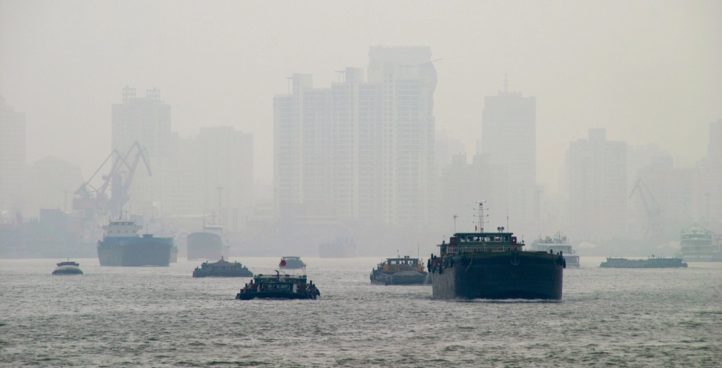Logistics is a fast-growing sector of activity and the mobility is essential to our way of life. At the same time, the transportation sector is the main source of environmental pollution. It is the first sector in emission of greenhouse gases and the first consumer of petroleum products. There are numerous environmental impacts in logistics transportation: pollution, noise, transport infrastructure occupying the urban space, and so on.
The most outstanding environmental impacts in logistics transportation
 The logistics transportation emits high greenhouse gas emission rates
The logistics transportation emits high greenhouse gas emission rates
Transport and the road traffic in particular produce fine particles that pollute the outside air. These particles are not only dangerous and carcinogenic to humans, but they are also toxic to ecosystems. Exposure to fine particles PM2.5 and to the particles PM10 reduces the human life expectancy and affect the newborns. Some respiratory and cardiovascular diseases are due to air pollution.
Likewise, greenhouse gases (CO2, CH4, N2O, O3, halocarbons, SF3) emitted by the means of transportation are harmful to nature. These pollutants due to road infrastructure in urban areas diminish the air quality and pollute the water reserves of the planet.
Pollution in the aquatic environment
The environmental impacts in logistics transportation also include oceans and the groundwater. Each year, there are ecological catastrophes related to the sinking of oil tankers. This, brings consequences in the ecosystem of oceans and sea coasts. In addition to the environments mentioned above, are the groundwater and rivers in rural areas the most damaged areas. As a result, aquatic species are threatened by this form of pollution and it is to be feared that some of them will disappear in the long term.
Noise pollution
 Transportation is a big noise. Road, sea and air traffic are responsible for this. The road transportation causes noises that could harm people and wildlife. In addition, there exist other kind of noises caused by the motor unit, tires on the road and also the aerodynamic ones. The sound of vehicles becomes a real nuisance beyond 50 km / h. The noise caused by rail transportation is due to wheel-rail contact, squealing of brakes or taking curves, from the diesel engine and aerodynamics for the TGV.
Transportation is a big noise. Road, sea and air traffic are responsible for this. The road transportation causes noises that could harm people and wildlife. In addition, there exist other kind of noises caused by the motor unit, tires on the road and also the aerodynamic ones. The sound of vehicles becomes a real nuisance beyond 50 km / h. The noise caused by rail transportation is due to wheel-rail contact, squealing of brakes or taking curves, from the diesel engine and aerodynamics for the TGV.
Finally, is the air transportation the last cause to be mentioned. This noise is focused around the airports and the aircraft passageways. Their intensity varies between 80 and 90 decibels. which affects the different species of birds that live around airports. This affects to the different species of birds that live around airports and humans. On the man, it is a discomfort and it can cause problems of communications, insomnia, and stress. These noises are also a nuisance for natural environments and wildlife.
The consumption of the natural environment and of energy.
The development of transportation and logistics infrastructure leads to a large consumption of space. Consequently, the environment is negatively impacted. The flora/fauna, agriculture and the environmental heritage end up being damaged. The impact of transportation on the environment also leads to acidification of soils and plants, and also to the depletion of the ozone layer due to greenhouse gases.
